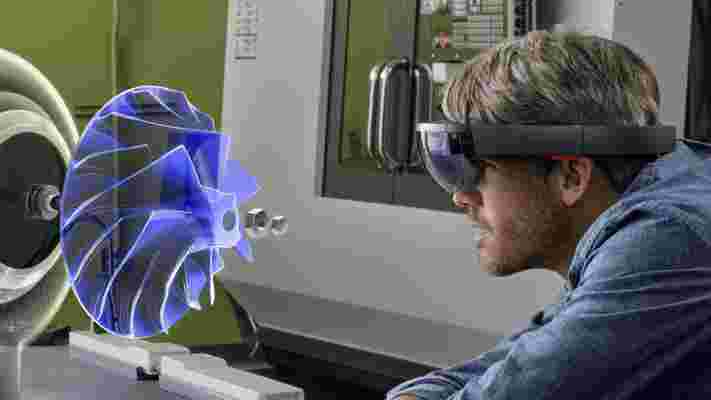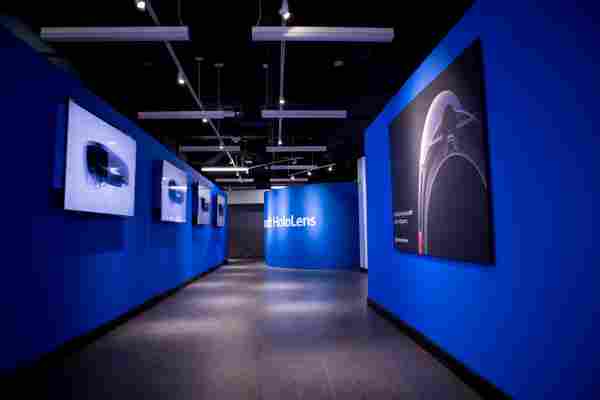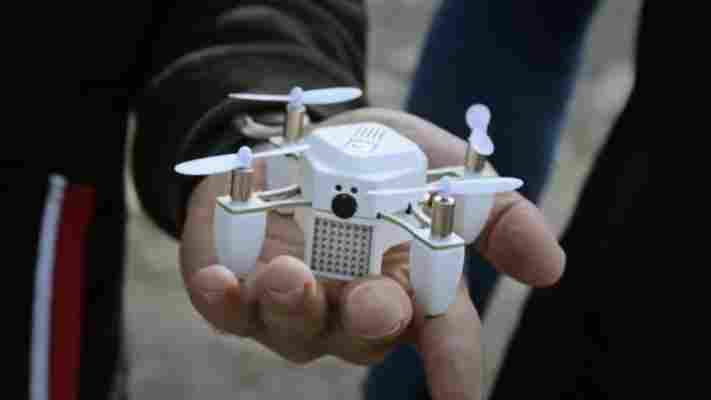If you own a smartphone or a tablet there’s a pretty good chance that you aren’t very impressed by the battery life; while processing power and storage advances continue apace, battery technology has made only modest gains. But consider yourself lucky that you can simply plug it into the wall and juice up again.

For a number of countries in sub-Saharan Africa that lack the required infrastructure, this simply isn’t the case. However, help may be at hand in the form of the UPP fuel cell charger made by British company Intelligent Energy .
Its CEO, Dr. Henri Winand, explained to TNW why Africa would be the first to get its hands on the UPP, but also why it’s more than just a charger.
Announced today at AfricaCom , the UPP is a PEM fuel cell charger capable of charging a smartphone five to seven times from flat to full. After that, the fuel needs replenishing or the cartridge changing for a new one.
The unit itself is comprised of two separate parts – the ‘engine’ and the ‘fuel’. The two are connected via a strong magnet that keep the pieces tightly locked together.
In order to maximize compatibility, the UPP is fitted with a simple USB input, meaning that anything that can charge off a USB port can charge on an UPP.
If that six or seven full charges doesn’t sound very impressive, that’s because the company doesn’t expect people to use them in this way, although they obviously can be. Winand explained:
On the side of the UPP’s ‘engine’ you’ll find the ‘exhaust’ – specially designed to expel at around vapor at 30 Celsius, just a little below the average body temperature.
While the UPP is by no means the first fuel cell charger on the market, few have an accompanying app. UPP does, though.
With it, you can do things like monitor how much fuel your UPP has left, see where to buy another cartridge and have it delivered to your house. All pretty handy while fuel cells and recharging stations are still a relatively scarce resource.
So what does the engine and the fuel cost? Variable amounts.
Winand explained that as Intelligent Energy’s business model is to sell to big businesses, like telecoms operators, it’s hard to put an exact retail price on the UPP (the company estimates the cost of $199). Whether that includes any fuel cartridges, or indeed multiple cartridges is down to the retailer selling it.
Alternatively, they might just offer it for free – keeping phones running means more money in their pocket.
Winand said that while it was launching in sub-Saharan Africa in its current form, the UPP was just the first step and would be available globally, and in many different configurations and products.
However, rather than replacing current battery technology as the primary source of power, Winand used the analogy of it being “an aspirin for the battery that was going from a headache to a migraine”; it would be used to augment battery life to levels far beyond what is seen today. And as it’s a true platform, it can be adapted to suit customers’ (device makers) needs.
Its current form is the UPP fuel cell charger, which is currently going through the end of its certification process and is due to ship in December. Exactly what form we’ll see it in next, Winand wouldn’t be drawn on, but if it could potentially give our phones or tablets enough charge for a week, we’re keen to find out.
Sign up to try the Hololens in New York from today
HoloLens is arguably Microsoft’s most exciting hardware endeavor in years – perhaps ever. But as with all things virtual or augmented reality, text and images don’t do the full experience justice, so Microsoft is opening up a permanent space in New York City for developers to try out HoloLens in person.



The experience is a follow up to an earlier roadshow across the country, and will be located in an extension to the company’s already-huge new flagship store (check out our tour and comparison with the Apple Store here ).
Here, developers will be able to try out a variety of experiences created under the universal Windows app platform (HoloLens apps are all basically modified Windows 10 apps).
These are set up in different rooms designed to imitate a living space, workplace, or showfloor and include the awesome Project X-Ray game the company showed off at its October event, 3D modelling using HoloStudio, a holographic product reel and more.
I was able to tour the space and it’s not hard to see why it would be an invaluable resource for developers until they can get their hands on hardware of their own next year.
The demo space is intended to help developers appreciate HoloLens’ current capabilities in a very pragmatic sense. These experiences are about what developers can do right now , though of course, the hope is also inspire them to create others .
On one hand, the exhibition helps you appreciate the awesomeness of mixed reality in a way you can’t grasp from videos and images; watching HoloLens do a 3D scan of your room as you move your head around is something straight out of a sci-fi movie.
On the other hand, it highlights the development hardware’s current shortcomings – most notably, a very narrow field-of-view. Given it’s unclear that will be much improved whenever the first retail versions arrive, at least developers can look for ways to work around the current limitations.
It’s also interesting to note that as cool as HoloLens is, using it doesn’t feel nearly as jarring as a VR headset; you’re always reminded you’re in a real space, for better or for worse. In a ways that’s just typical Microsoft; the company cares just as much about HoloLens’ productivity potential as its entertainment value.
If you’re a developer in the NY area and want to sign up to try it yourself, you can head on over to www.hololenseventom to register for the demo sessions starting today. Microsoft hopes to soon expand to other areas.
Waitlists for previous roadshow events has filled up quickly (like, in 90 minutes from availability), and we imagine the same will be the case in New York too.
➤ HoloLens Roadshow
Kickstarter is investigating Zano’s $3.5m failed drone project, but what about the rest?
Kickstarter has commissioned a freelance journalist to investigate a high-profile drone project that failed after raising nearly $3.5m on the crowdfunding platform.

The move is an odd one for a company that tends not to get overly involved when Kickstarter projects go awry. Zano’s swarming drone project is by no means alone in the ‘currently undelivered’ category; LightFreq is just one other project that far surpassed its initial goal, but has never materialized for backers.
In a statement given to the BBC , Kickstarter said:
For the backers of Zano, that’s perhaps some cold comfort at their lost cash, but with a number of other failed projects left in its wake, is it a strategy that the company will expand to other projects?
Naturally, it’s a question I’ve asked but I’m yet to get a response.
Publicly stating that it wants to get to the bottom of the story is a new move for Kickstarter, and can perhaps be taken as a sign that the company’s beginning to heed the voices of disgruntled project backers around the world, who’ve lost millions of dollars along the way. Kickstarter deducts its fees before the cash is transferred to a successful project creator, so it’s not a (directly) financial problem for the company, but it is one of trust.
If a high-profile campaign that raised millions of dollars can be left to go unchecked after announcing voluntary liquidation, that’s not going to build a lot of trust in other smaller projects for potential backers.
To combat this growing feeling, rival platform Crowd Supply takes a far more hands-on approach to ensuring that creators deliver projects , and so far claims to have a 100 percent success record.
Getting to the bottom of the story might help ease Zano’s backers pain a little, it’s not going to help much in stopping it happen again unless additional measures are put in place.
I’ll update this article accordingly, if Kickstarter responds to my questions.
Update: A spokesperson for Kickstarter responded to say:
“The Zano project launched a month after we updated our terms of use. One change in that update was that we laid out a path creators should follow if their projects are failing. The terms set up a contract between creators and backers that, in the event of project failure, requires the creator to come forward and explain what happened and how funds were used.
